Critical Literacy is an instructional approach, designed to give the reader a critical eye when reading text. (this can also apply to messages, images, media) Critical literacy encourages readers to actively analyze texts and offers strategies for what proponents describe as uncovering underlying messages.
Transformative Learning
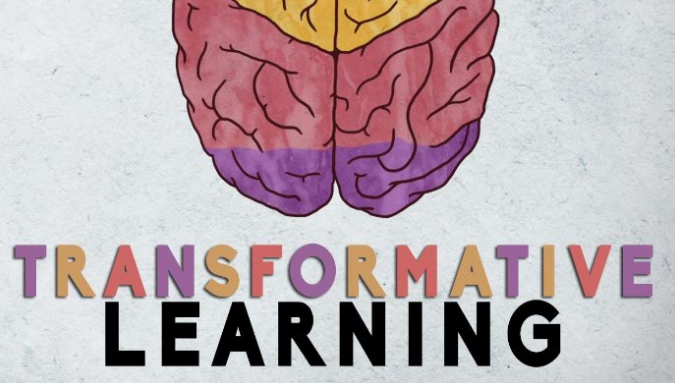
What do we mean by transformative learning?
Transformative learning theory says that the process of “perspective transformation” has three dimensions:
-
psychological (changes in understanding of the self),
-
convictional (revision of belief systems),
-
and behavioural (changes in lifestyle)
Transformative Learning Theory was first articulated by Jack Mezirow of Columbia University.
-
A disorienting dilemma
-
A self examination with feelings of guilt or shame
-
A critical assessment of epistemic, sociocultural, or psychic assumptions
-
Recognition that one’s discontent and the process of transformation are shared and that others have negotiated a similar change
-
Exploration of options for new roles, relationships, and actions
-
Planning a course of action
-
Acquisition of knowledge and skills for implementing one’s plan
-
Provision trying of new roles
-
Building of competence and self-confidence in new roles and relationships
-
A reintegration into one’s life on the basis of conditions dictated by one’s perspective
If you would like more about this theory here’s a great video !
Podcasts!
Podcasts are available online and on iOS/Android devices. Students can download on their own devices or listen at school!
Culips ESL
Age Range: Best for ages 10-12
This is great resource that allows students to practice conversational English. Helps improve improve fluency, comprehension, vocabulary, and understanding of common English expressions!
Tumble

Age Range: Best for ages 6-12, appropriate for any age
Tumble is a science podcast that shares the stories behind science discovery. It explores how science actually works as a process. With stories ranging from reaching the deepest part of the ocean to hunting for black holes in distant galaxies, Tumble is co-hosted by a science journalist and a teacher.
Book Club For Kids

Age Range: Best for ages 9-14, appropriate for any age
In every episode of this podcast, a different group of kids discusses a young adult book. Each episode also features a celebrity reader and an interview with the book’s author.
Short & Curly
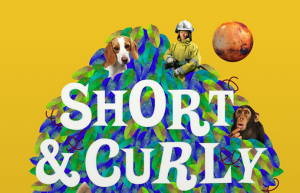
abc.net.au/radio/programs/shortandcurly
Age Range: Best for ages 7-12, appropriate for any age
Short & Curly is an ethics podcast from Australia. The hosts investigate dilemmas relevant to kids, like whether you have to love your sibling or whether Pokemon Go is actually playing you.
Brains On!
Age Range: Best for ages 6-12, but interesting to all curious minds
Each episode of this science podcast is co-hosted by a different kid, tackling their questions with interviews, fun segments, and the occasional musical number. Episodes cover a wide range of topics like carnivorous plants, interpreting dog and cat sounds, and life on other planets.
But Why
digital.vpr.net/programs/why-podcast-curious-kids
Age Range: Best for ages 5-10, but interesting to all curious minds
Produced by Vermont Public Radio, each episode of this podcast starts with an audio recording of a child asking a question (listeners are invited to send in their own), such as why people have different religions, why the sea is salty, and whether bumblebees have hearts. The rest of the episode goes on to answer that question by inviting experts to share their knowledge on the topic in simple language kids can understand.
List Created by www.cultofpedagogy.com
SMART boards
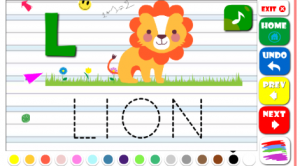 In a 2012 study done the University of Alabama concluded that “The results showed that using an interactive whiteboard for (a) visual presentations, (b) interactive games, and (c) test reviews was useful for the English language learners to learn new vocabulary and engage in learning.”
In a 2012 study done the University of Alabama concluded that “The results showed that using an interactive whiteboard for (a) visual presentations, (b) interactive games, and (c) test reviews was useful for the English language learners to learn new vocabulary and engage in learning.”
The SMART boards were used in three different ways;
- The educator used it to present visual materials for vocabulary instruction. For example, when students learned new words for the first time, the teacher prepared related images (e.g., urban, rural) and explained the meanings of words. The teacher also utilized many video or animation resources from the internet.
2) The teacher used the SMART Board for interactive games or activities. The SMART Notebook program included a lesson activity toolkit that allowed the teacher to create interactive games. Using this tool, the teacher created activities such as category sort, image match, and word guess.
3) Third, the SMART Board was used for test preparation. Students reviewed weekly vocabulary words using the SMART interactive response system every Thursday for a test held the next day. Using this tool, each student identified answers to questions presented on the SMART Board and verified answers immediately. If many students missed a single question, the teacher provided additional explanations to make sure that everyone understood the information.
The vocabulary test results showed that students’ posttest scores improved 36 points on average, ranging from 18 to 52 points’ difference.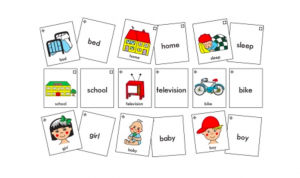
Do we really need it?
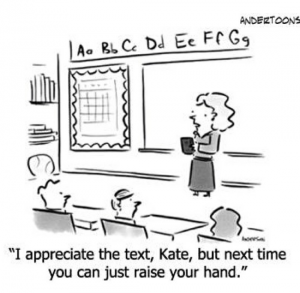
Originally published by the Huffington Post this 2014 article highlights just a few reasons why children should limit their screen time (TV, handheld devices, ect…) The American Academy of Pediatrics and the Canadian Society of Pediatrics state infants aged 0-2 years should not have any exposure to technology, 3-5 years be restricted to one hour per day, and 6-18 years restricted to 2 hours per day.
This article addresses key issues that may be important for an educator to familiarize his/herself with before integrating too much screen time in their classroom. For example; technology overuse is implicated as a causal factor in rising rates of child depression, anxiety, attachment disorder, attention deficit, autism, bipolar disorder, psychosis, and problematic child behaviour. (Bristol University 2010, Mentzoni 2011, Shin 2011, Liberatore 2011, Robinson 2008) In May of 2011, the World Health Organization classified cellphones (and other wireless devices) as a category 2B risk (possible carcinogen) due to radiation emission.
I think we would be doing our students a dis-service by giving them unlimited time on devices. I mean, it has taken my Omi, who is 89, to develop more than proficient skills on her ipad in less than half a hour. Our children will not be left behind if technology isn’t integrated in to our schools 100%. It’s important for everyone to to limit screen time at any age, and we will always have podcasts or audio books as an amazing alternative.
Digital Literacy Defined
“Digital Literacy is the interest, attitude and ability of individuals to use digital technology and communication tools appropriately to access, manage, integrate, analyze and evaluate information, construct new knowledge, and create and communicate with others.”
-BC’s Digital Literacy Framework – BC Government
Storybird
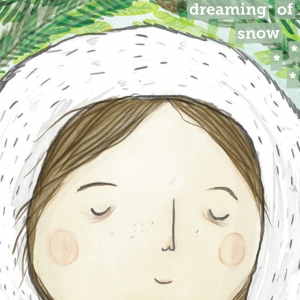 This whimsical story making website might be our all time favourite! It gives beautiful images and let’s the creator choose if they want to create a long form story, short, wordless, or a poem. Once you have chosen an image, a number of words will show up on the sides of the image letting you drag and drop each word to create a story. It’s so cute and would be great for ELLs learning to read, write sentences and format narratives!
This whimsical story making website might be our all time favourite! It gives beautiful images and let’s the creator choose if they want to create a long form story, short, wordless, or a poem. Once you have chosen an image, a number of words will show up on the sides of the image letting you drag and drop each word to create a story. It’s so cute and would be great for ELLs learning to read, write sentences and format narratives!
This would be ideal for students working at a high proficiency (or if student can work with a ELL educator or teacher nearby) as some words are complicated and the website does not give audio pronunciation. Another downside is the stories are in english only.
